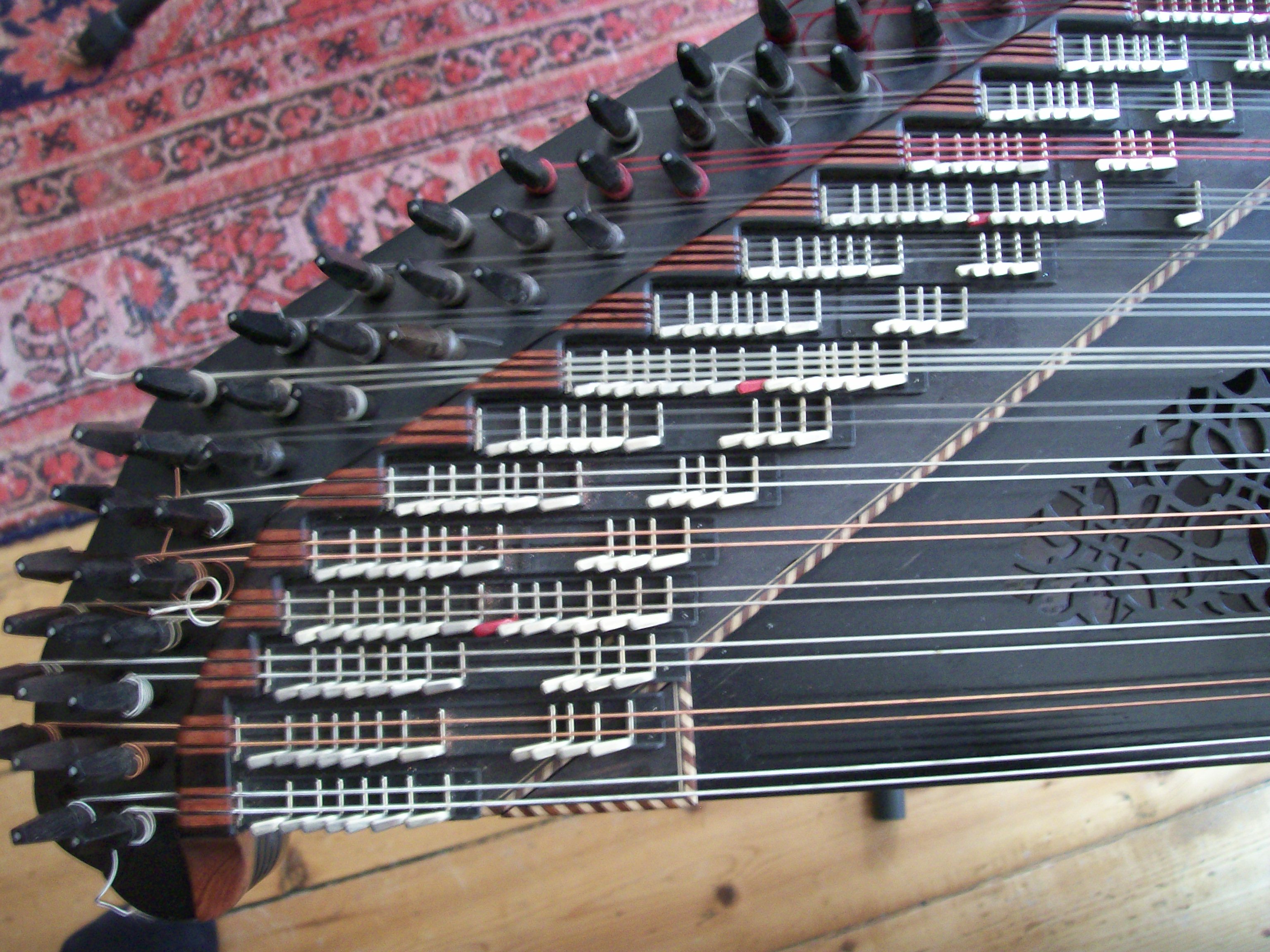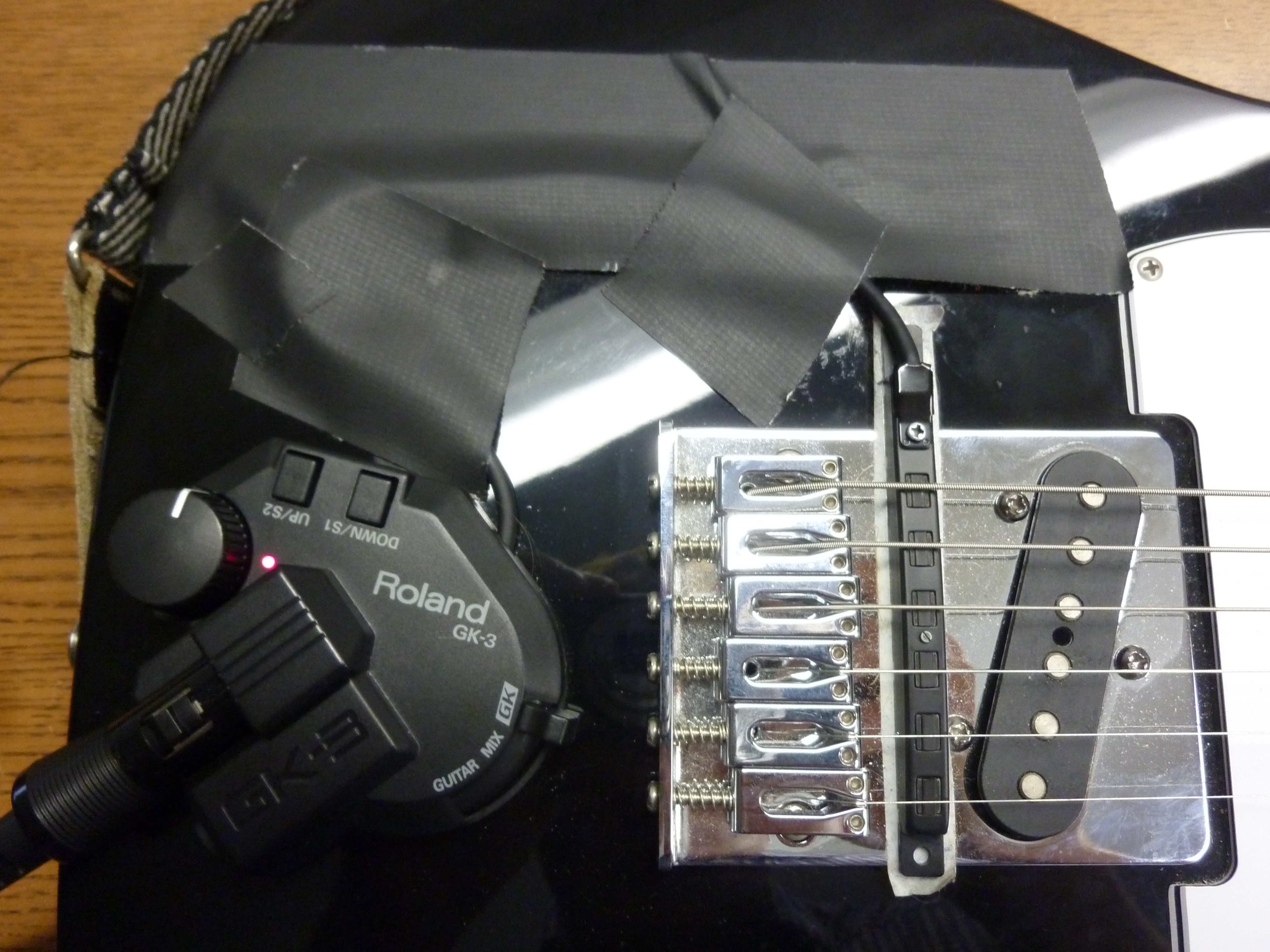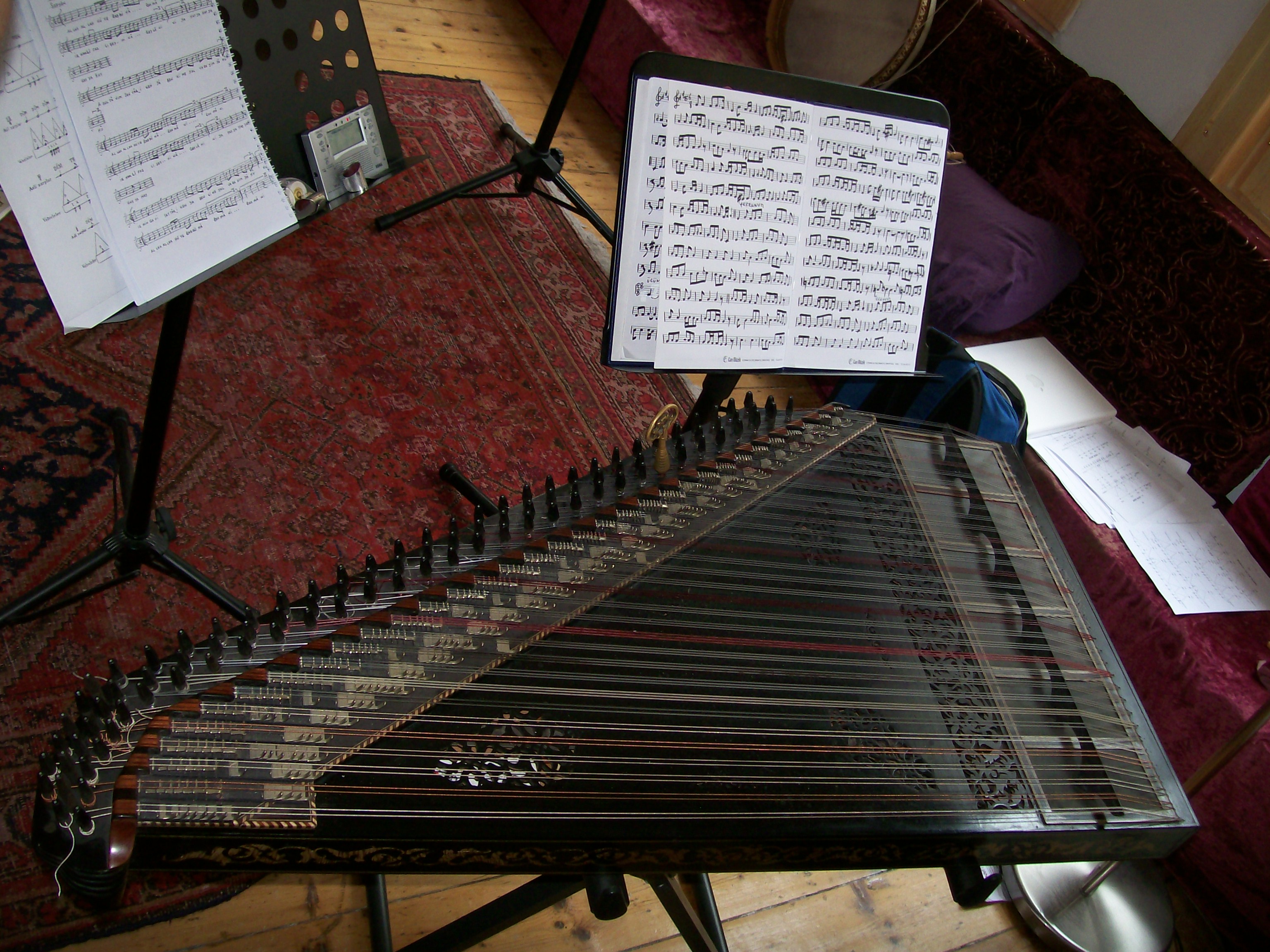Cognitive Consonance (2010)
for qanûn, hexaphonic electric guitar, ensemble (flute, clarinet, harp, mandolin, percussion, violin, cello, bass), and electronics [25:30]
I. Disorientation [Qanûn solo]
Interlude
II. Westering [Hexaphonic Electric Guitar solo]
Cognitive Consonance: A state of internal harmony arising from the reconciliation between two initially contradictory ideas. Here, a single piece divided into two parts, linked by an electronic interlude. Two plucked-string soloists from two disparate worlds. Two different sets of tools for composing with electronics, and two different approaches to the practicality of writing non-tempered ensemble music.
Or, a two-word manifesto, for a music as “cognitive”—capable of provoking thought and reflection, engaging the faculties of association and memory—as it is “consonant”—a notion that the piece aims to explore, expand, and redefine, the common thread between its superficially disjunct episodes.
The title of the first section, Disorientation, should be understood in a second, more etymological sense: a turning away from the orient, the disassociation of the qanûn from its Middle Eastern context. The spotlight here is on the custom-made instrument and microtonal tuning system devised by Julien Weiss, which specifies fifteen non-equidistant intervals per string (between a given flat and sharp). The pitch is altered by raising or lowering small levers under the string (mandals), often in the middle of playing, or even while executing a phrase with the other hand. Based on a Pythagorian rather than tempered framework, Julien’s instrument is capable of closely approximating several just intervals with reliable precision. With a scordatura for the strings onstage—a mixture of plucked and bowed—and retuned samples in the electronics, the goal is to explore the combinatorial possibilities offered by the qanûn while maintaining the same precise control of pitch in the ensemble writing.

The electronics mirror the soloist with several shades of plucked strings, created with IRCAM’s physical modeling software Modalys, which synthesizes each pitch according to the physical parameters of three separate strings given a slight variation in pitch—as would be the case on a real qanûn. The final eight-channel sound files are created via an OpenMusic interface, where pitch, synthesis, and spatialization (using the OMPrisma library) are controlled in a single integrated process.

Disorientation is divided into three sections, with the following subtitles:
1.) Inici (Falling): Starting from a high E (later understood as the 81st partial), a prolonged descent over about five minutes, during which the partials of a low C (from the 17th, a C sharp, to the 5th, a natural third) will serve as the local tonics of ‘makams’ constructed from higher partials. The descending curve ends with a mass of resonant strings, a harmonic spectrum perturbed by ‘commas’ derived from whole-number frequency ratios.
2.) Meyan (Midpoint): An exploration of the division of the perfect fifth (or twelfth), with pitches derived from inverted ratios moving inwards from each of the two poles.
3.) Croissant (Crescent): An episode written with an approximation of the Bohlen-Peirce scale and its odd-ratio intervals (5/3, 9/7, 9/5, etc.) triggers a progressive accumulation of string sounds, then tactile models in Modalys—sweeping motions over a plane of tuned strings, modeled on Harry Partch’s harmonic canons. Mirrored harmonies, with the same ascending and descending ratios around a central pitch (often the D above middle C) create an increasingly dense texture that spills over into the electronic interlude.
The title of the second section, Westering, evokes the idea of a westward movement; the piece is largely inspired by music associated with the west—country and western guitar timbres, West African balafon music, but above all music from California: the just intonation ratios and plucked-string instruments of Harry Partch (to whom the adapted autoharp played by the mandolinist pays homage), Los Angeles folk/rock (Joni Mitchell’s chains of consonant harmonies, Jeff Lynne’s superimposed layers of strummed guitars), as well as psychedelic rock from San Francisco, and its rig of classic guitar effects.
 Here the soloist is a hexaphonic guitar—an electric guitar fitted with a hexaphonic pickup that sends out a separate signal for each string. With an independent transposition control for each string, an even finer degree of microtonal precision than the qanûn’s can be obtained. Effects can be applied with a different rate to each string, creating a polyrhythmic tremolo for instance, a six-voice wah-wah effect, or a dynamic delay that transforms a strummed chord into an arpeggio or a fingerpicking pattern. Spatializing each string separately as well, the electronics control the pitch, timbre, and movement of several independent layers in real time. The computer-aided orchestration software Orchidée was also used to reproduce the timbre and pitch content of distorted electric guitar chords in the ensemble.
Here the soloist is a hexaphonic guitar—an electric guitar fitted with a hexaphonic pickup that sends out a separate signal for each string. With an independent transposition control for each string, an even finer degree of microtonal precision than the qanûn’s can be obtained. Effects can be applied with a different rate to each string, creating a polyrhythmic tremolo for instance, a six-voice wah-wah effect, or a dynamic delay that transforms a strummed chord into an arpeggio or a fingerpicking pattern. Spatializing each string separately as well, the electronics control the pitch, timbre, and movement of several independent layers in real time. The computer-aided orchestration software Orchidée was also used to reproduce the timbre and pitch content of distorted electric guitar chords in the ensemble.
The image of a westward wandering is also embodied in the loose form of the piece, a chain of interlocking events that unfurl like a series of discoveries in an unfamiliar landscape, the western myth of perpetual possibility…
Cognitive Consonance is deeply indebted to all the researchers, developers, and musicians at IRCAM who contributed their time and expertise, notably Nicholas Ellis, Marlon Schumacher, Jean Lochard, Clément Marie, Jean Bresson, René Caussé, and Yan Maresz. Special thanks to Cyril Béros, for his vision and his encouragement, and Eric Daubresse, for his invaluable advice and guidance throughout the project.Cognitive Consonance was written in conjunction with the Cursus 2 at IRCAM, and premiered during the Agora festival on 9 June 2010 at the CENTQUATRE in Paris, with Julien Jalâl Eddine Weiss on qanûn, Christelle Séry on hexaphonic electric guitar, and the Ensemble L’Itinéraire conducted by Mark Foster. The electronics were realized at IRCAM by the composer, under the guidance of Eric Daubresse.
